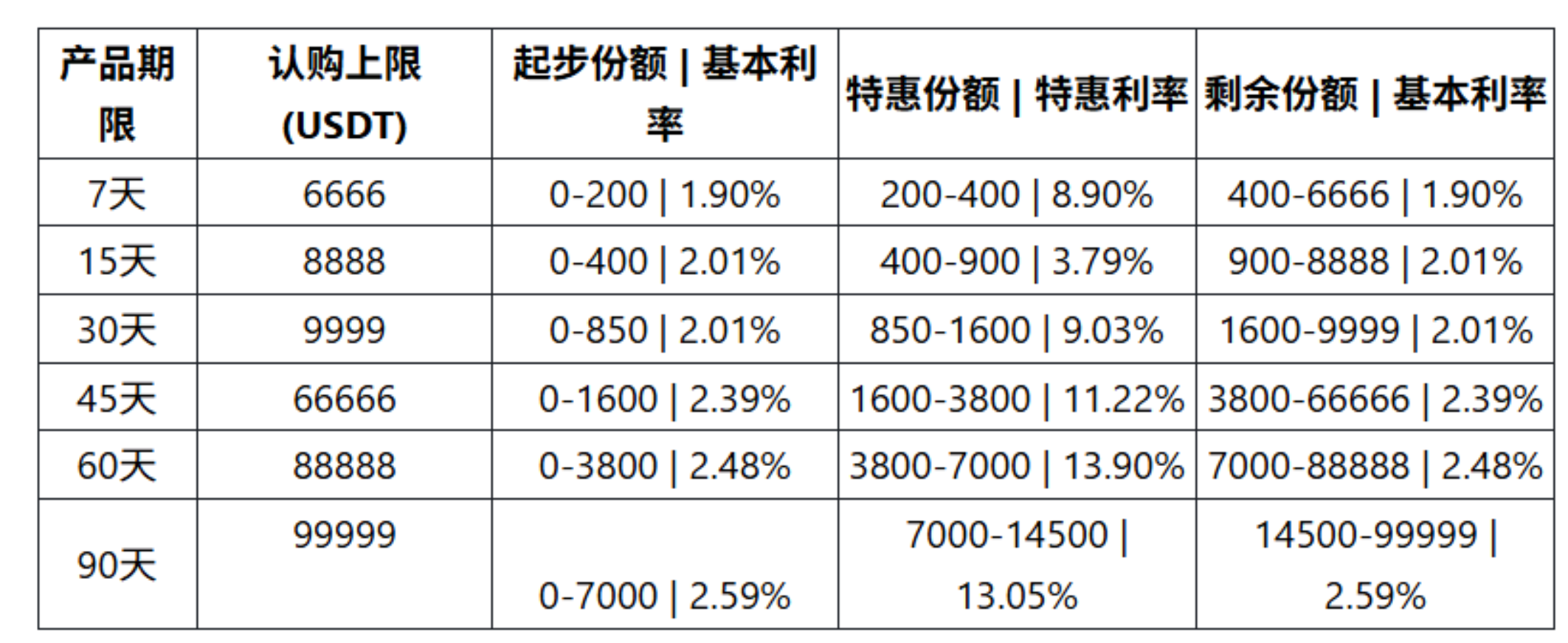JuCoin launches its first USDT fixed-income product with tiered APY

JuCoin just launched its inaugural USDT fixed-income product, joining a growing roster of trading platforms that offer tiered-yield and flexible staking solutions for USDT holders.
On May 26, JuCoin, a Singapore-based trading platform, officially launched its first Tether (USDT) fixed-income product with tiered APY. The offering includes six different terms—7, 15, 30, 45, 60, and 90 days—designed to cater to varying investor preferences.
JuCoin employs a “ladder interest rate” model, where yields are tiered based on investment amounts. Each product has a base quota with a standard interest rate, followed by a preferential tier that offers a higher rate. Any amount exceeding this tier reverts to the base rate. Earnings are calculated daily and distributed automatically upon product maturity.

For example, an investment of 4,000 USDT in the 45-day product is broken down as follows: the first 1,600 USDT earns a base APY of 2.39%, the next 2,200 USDT qualifies for a higher APY of 11.22%, and the remaining 200 USDT returns to the base rate. The blended annualized return in this case would be approximately 7.25%.
With this new offering, JuCoin joins a growing number of trading platforms that are already offering similar products. For example, Bybit offers USDT-based options with tiered yields across various durations, with current rates including 2.70% for 14 days, 3.20% for 30 days, 4.00% for 90 days for both fixed-term and flexible deposits. Among major exchanges, KuCoin, Binance, Kraken, and MEXC also offer USDT staking across fixed and flexible terms with a range of APYs.
To be clear, in fixed-term staking, users commit USDT for a set period in exchange for a predetermined APY, and they cannot withdraw until the term ends. The platform pools these locked funds and typically lends them out to institutional borrowers or uses them in liquidity-providing and yield-farming strategies, generating steady interest that’s shared with holders at maturity.
Flexible-term staking, by contrast, lets users deposit and redeem USDT at any time. Rates are usually lower and can fluctuate based on demand but offer the convenience of instant access to locked capital.















